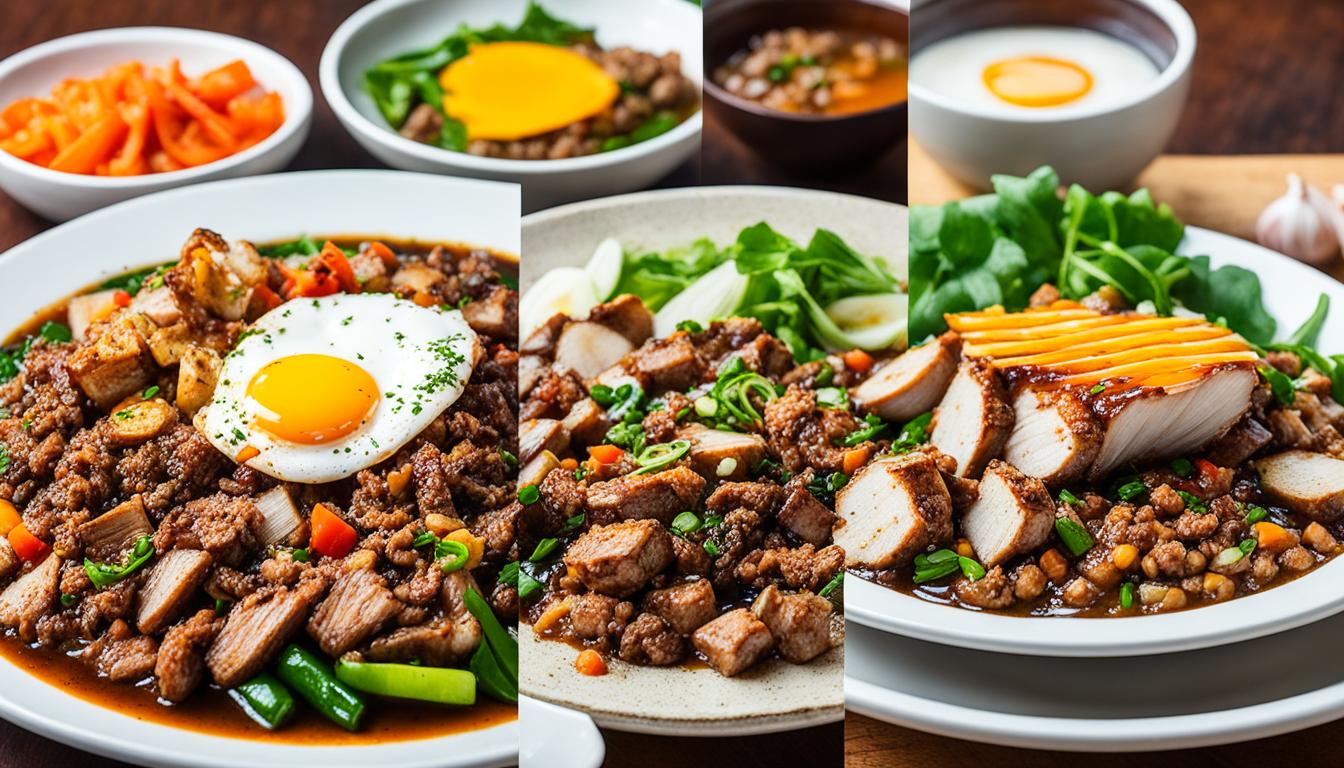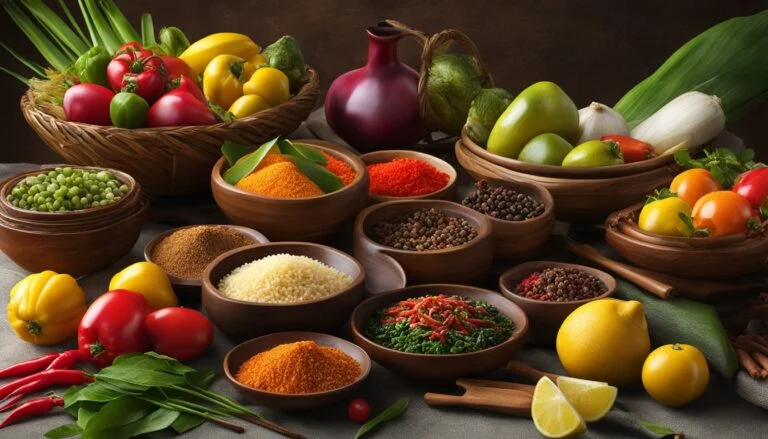Unraveling the Tapestry of Filipino Cuisine 🇵🇭
With each succulent bite, Filipino Cuisine invites you on an odyssey that overflows with a cornucopia of flavors, infusing your taste buds with the archipelago’s rich and colorful heritage. Often overlooked amidst the prominent global culinary players, Filipino food culture is a treasure of gastronomic delight, steeped deeply in centuries-old traditional Filipino cooking and brimming with Filipino culinary traditions that beckon to be explored. It’s an adventure carved out of the assortment of popular Filipino recipes and the Filipinos’ love affair with their culinary masterpieces. But, to truly grasp the soul of this Southeast Asian cuisine, one must dive headfirst into its diverse palette of Filipino food specialties, which promises a deliciously immersive experience.
Splendid fusion and historical influences from Spain, China, and Malaysia have sculpted a unique Filipino food scene where every dish narrates a different tale. From the savory adobo to the vibrant Lechon—a rollicking celebration of the senses awaits those who venture into this culinary landscape. Are you ready to tantalize your palate and embark on a culinary journey through the Philippines?
Discovering the Essence of Filipino Cuisine
The tapestry that is famous Filipino cuisine reflects a dynamic interplay of historical influences and native culinary techniques, resulting in authentic Filipino dishes that excite and comfort in equal measure. This diverse array of Filipino culinary delights not only tantalizes the taste buds but also tells the story of the country’s rich past through traditional Filipino cooking. Let us delve into some of the most iconic dishes that every food enthusiast must explore.
Savoring Adobo: The Unofficial National Dish
Adobo is more than just a dish; it’s an institution in Filipino households. This savory mix of meat, typically pork or chicken, is marinated and cooked in a potent concoction of soy sauce, vinegar, and a blend of spices, culminating in a dish that stands as a beloved symbol of national identity. The simplicity of its preparation belies the complex flavors that have made Adobo a cornerstone of Filipino cuisine.
Experiencing Sinigang’s Unique Sourness
Sinigang epitomizes the Filipino love for sour flavors, featuring a tamarind-based broth that is both refreshing and invigorating. A variety of ingredients including pork, beef, or fish are added, along with a medley of vegetables like tomatoes, daikon, and water spinach, making it a healthy and satisfying staple that warms the soul.
Lechon: A Festive Centerpiece
No Filipino celebration is complete without Lechon. This dish involves a whole pig, slow-roasted to perfection until its skin turns golden and crackling. The result is a sumptuous feast, with tender, flavorful meat that is reflective of the Philippines’ love for communal dining and festive spirit.
The Comfort of Home in Arroz Caldo
Arroz Caldo presents the ultimate comfort food experience, influenced by the country’s Spanish and Chinese heritage. This rice porridge, traditionally infused with chicken, ginger, and garlic, offers warming nourishment. It’s a healing dish, often served to family members during rainy days or when in need of a cozy embrace.
| Dish | Key Ingredients | Flavor Profile | Cultural Significance |
|---|---|---|---|
| Adobo | Pork, Chicken, Soy Sauce, Vinegar | Savory, Tangy | National Identity |
| Sinigang | Meat or Fish, Tamarind, Vegetables | Sour, Umami | Love for Sour Dishes |
| Lechon | Whole Pig, Spices | Rich, Smoky | Festive Celebrations |
| Arroz Caldo | Rice, Chicken, Ginger | Warm, Comforting | Comfort Food |
Each of these dishes showcases the essence of traditional Filipino cooking and is integral to the fabric of authentic Filipino culinary culture. From the everyday comfort of Adobo to the festive extravagance of Lechon, these dishes offer a window into the heart of Filipino life. As we uncover the flavors and stories behind these dishes, we gain a deeper appreciation for the culinary mastery that Filipino cuisine has to offer.
Filipino Cuisine: A Tapestry of Flavors
Embarking on a culinary journey through the Philippines is akin to weaving through a vibrant fabric of tastes and traditions. The essence of Filipino Cuisine is captured in bold dishes that boast a harmonious symphony of flavors, truly reflecting the archipelago’s complex history and cultural diversity. At the heart of traditional Filipino cooking lies the ubiquitous Adobo, with its savory umami profile, and Sinigang, noted for its memorable sour zing. Lechon, meanwhile, offers a glimpse into the nation’s festive spirit, with its whole-roasted, crackling façade.
Beyond these iconic offerings, the Filipino culinary traditions extend to include savory dishes such as the nutty Kare-Kare, and adventurous eats like Balut, which showcase the rugged and resourceful edges of Filipino food culture. Halo-Halo, with its eclectic mix of sweet ingredients and crushed ice, stands out as a testament to the Filipino knack for creating flavorsome contrasts. The influence of international cuisines is seamlessly woven into the fabric of local fare, with Pancit Canton featuring nuances of Chinese culinary techniques and the Bangus Belly hailing the local fish bounty.
Traditional Filipino cooking, however, does not shy away from the lighter, more understated flavors of its cuisine. Tinolang Manok is one such example, a simple yet heartwarming chicken soup perfumed with ginger, widely enjoyed across the islands. In contrast, the festive occasion is marked by the preparation of Bibingka – a pre-colonial rice cake that wraps one’s senses in Filipino tradition. Collectively, these dishes contribute to a veritable mosaic of culinary experiences, making Filipino cuisine a richly flavored tapestry that continues to attract food enthusiasts from around the world.







